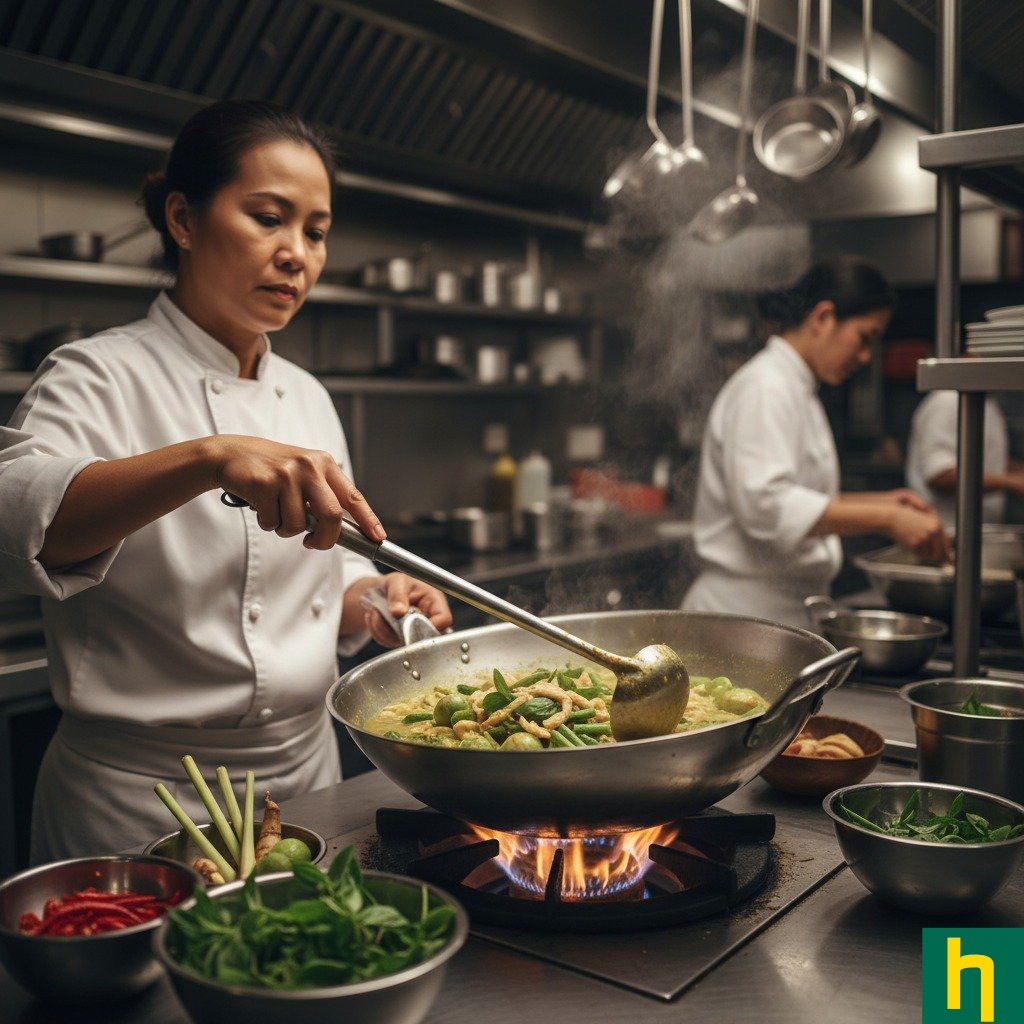Defining Thai cuisine is difficult due to its sheer variety. From the simple noodle or chicken rice restaurants to the Thai street food hawker stalls. From Five-Star Fried Chicken, to Pad Thai noodles, or Roti with Bananas and cream.
While all of these are “Thai food” in the sense that they’re all eaten in Thailand, many are new phenomena.
The origins of these “Thai fast foods” are in the migrations of Chinese and Bangkok urbanisation. However, Thai food in a more traditional sense has more to do with the earlier societies. Such as societies that thrived along the Chao Phraya River. Or the culinary traditions of the great Thai Kingdoms.
Central Thai Cuisine History: How the Kingdom’s Kitchen Evolved

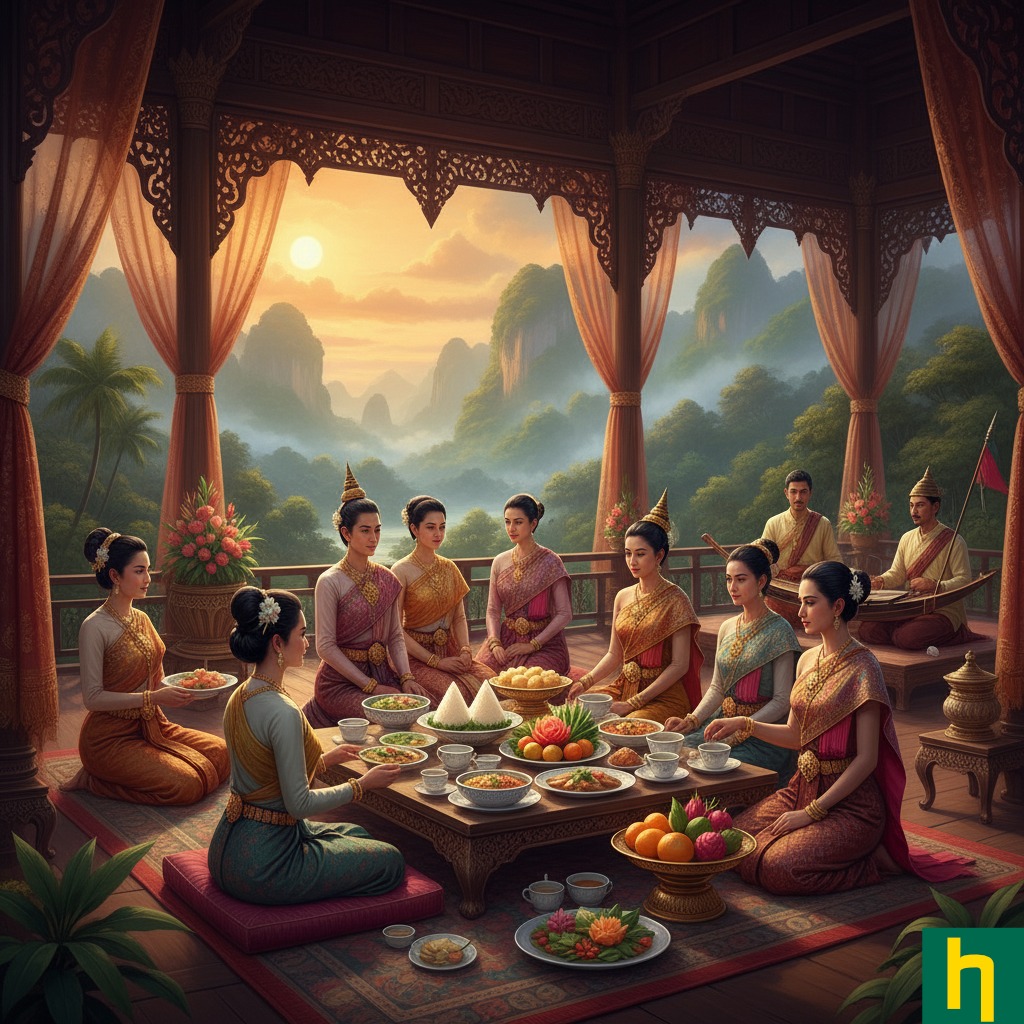
The great Chao Phraya River has for millennia irrigated the flat plains of Central Thailand, making it an ideal place for rice cultivation and fishing. Freshwater fish, with herbs and vegetables, have formed the backbone of the region’s diet.
The diet was refined by the royal courts of Ayutthaya and Bangkok within their kitchens. Here, an aristocratic Royal Thai Cuisine was born. Unlike the rustic fare of Isan, these courtly dishes were designed to be masterpieces. Records from the past describe royal chefs carving vegetables into elaborate floral designs. Others, of chefs painstakingly balancing flavours to please the king’s palate. Refinement and presentation were paramount. Some chefs were valued as highly as the battling generals who fought the Burmese.
But Thai cuisine didn’t develop in a vacuum. It was also shaped by centuries of trade and migration. The Chinese introduced stir-frying and rice noodles. Indian and Persian traders brought spices like cardamom and cumin, which have become the soul of Thai creamy curries. And of course, the chilli pepper, now a cornerstone of Thai heat, arrived with Portuguese missionaries in the 17th century.
The Essential Thai Larder
To understand the genius of Central Thai cooking is to understand its essential building blocks. A single flavour doesn’t define Thai food, but rather an interplay of ingredients.
At its heart lie three aromatic plants: lemongrass, galangal, and kaffir lime leaves. These are responsible for the fragrance that defines so many classic dishes. Lemongrass offers a clean, citrusy zest, and galangal provides a pungent, earthy spice. The kaffir lime leaf gives a sharp, perfumed fragrance. Removing just one of these from a soup like Tom Kha Gai leaves it feeling incomplete.
While these aromatics provide the soul, a handful of sauces and pastes provide the body. The salty punch of fish sauce (nam pla) is the most critical, a savoury kick that gives Thai food its backbone. Then there’s the creamy texture of coconut milk. And finally, the tang of tamarind paste delivers the sour that distinguishes many central dishes.
And central to every meal is Jasmine Rice. Known worldwide for its delicate, floral aroma and soft, fluffy texture, this long-grain rice provides the canvas on which you paint all other flavours.
The Greats of the Central Table: A Culinary Guide
A foodie traveller must stand bold and sample the dishes eaten in the region. Fortunately for you, in the Central Thai cuisine heritage, there’s a collection of iconic dishes to choose from.
Tom Yum Gung
Widely considered the national dish, this hot and sour shrimp soup is a case study in flavour balance.
Its aroma carries the unmistakable notes of lemongrass, galangal, and kaffir lime, while a fiery kick of bird’s eye chilli is expertly tamed by a squeeze of fresh lime juice.
Gaeng Keow Wan
The name, which translates to “sweet green curry,” is harmonious and complex. The colour is derived not from herbs but from a potent paste of fresh green chillies, which is then mellowed by creamy coconut milk. Unlike the drier curries of, say, Northern Thailand, this Central Thai version is a rich, aromatic stew, its sweetness and creaminess acting as a perfect counterpoint to the underlying heat.
Pad Thai
While now a global sensation, this stir-fried noodle dish has a surprisingly modern history. It was officially promoted as a national dish in the 1930s by Prime Minister Plaek Phibunsongkhram. His government, seeking to create a sense of national unity and reduce rice consumption, championed this affordable and easily prepared dish. The result is a fusion of salty, sour, sweet, and nutty flavours.
Massaman Curry
A journey on a plate, this rich curry is the outcome of centuries of foreign trade. Its Indian and Persian roots are evident in its blend of spices—cinnamon, cloves, and cardamom—which were not native to Thailand. Its name is a corruption of the word “Muslim,” a heads-up to the merchants who first introduced these ingredients. The result is a mild, sweet curry, containing potatoes and peanuts, that stands in contrast to the spicy curries of the region.
A World of Thai Food Awaits
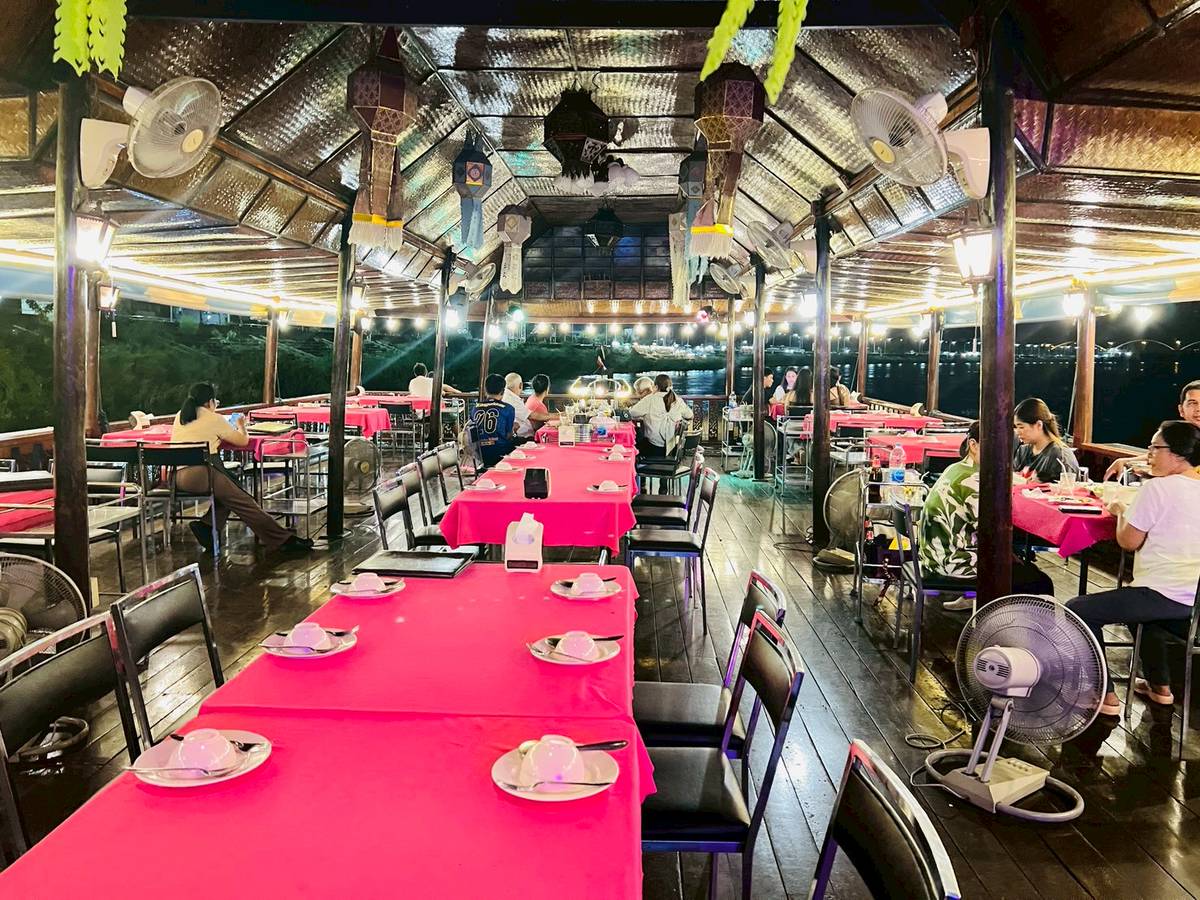
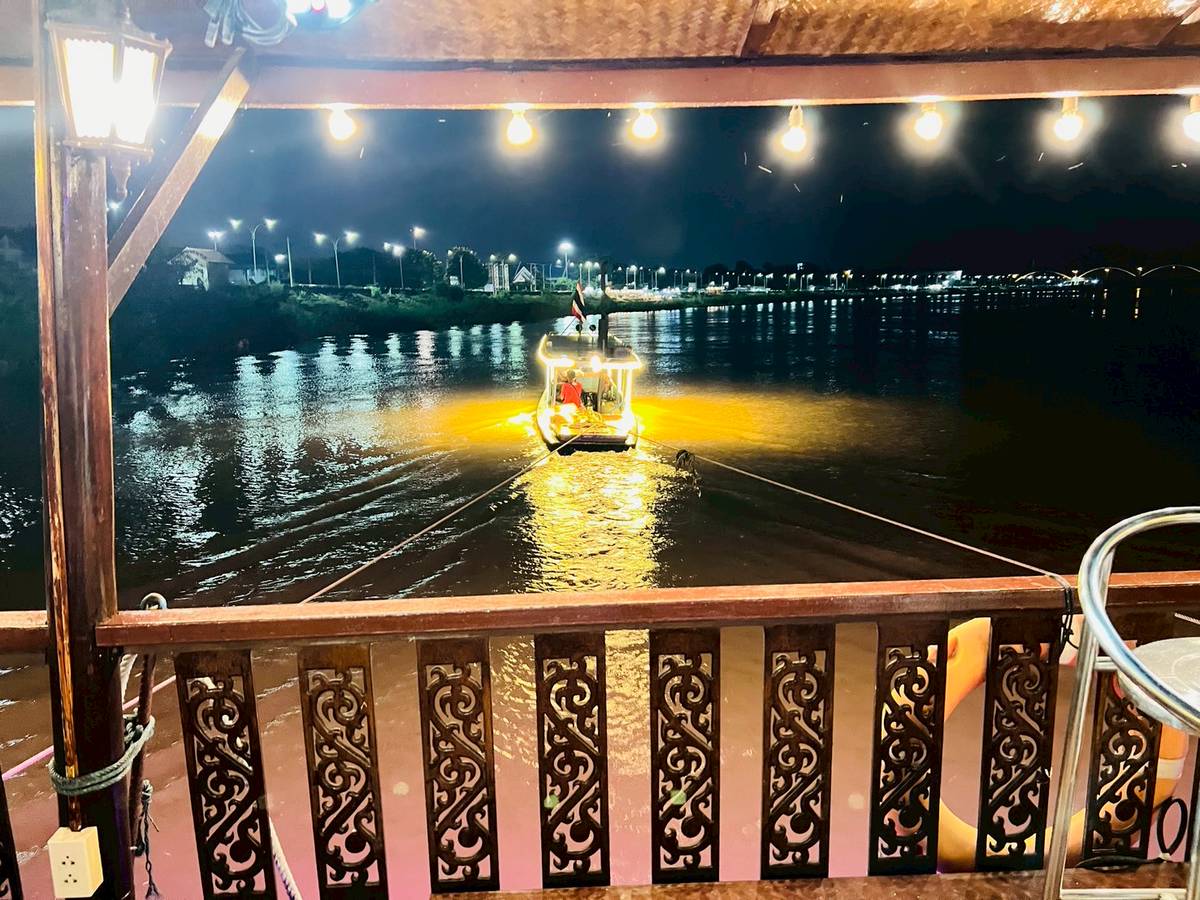
But now we know the classics — a different kind of culinary journey exists. It’s a journey that takes us to the beginning of the Chao Phraya River and the unassuming town of Nakhon Sawan. It’s here that the north’s two great arteries, the Ping and the Nan rivers, converge, and then 370 kilometres later reach Bangkok and the Gulf of Thailand.
The locals here speak of a peculiar tradition: “bamboo rafting.” The phrase is a delightful misnomer, a playful take on the river life that’s a world away from the simple rafts one might navigate through the rapids of Pai or Vang Vieng in Laos. These are no ordinary bamboo rafts; they are floating restaurants—large, solid wooden structures, some years old, that serve as mobile, river restaurants.
They’re not propelled by the current but are towed lazily up and down the river by a small boat with an engine. It’s a gentle glide that’s a world away from the rush of a bamboo raft. Eating here is a slow, meditative experience.
Thai Oysters With a Twist
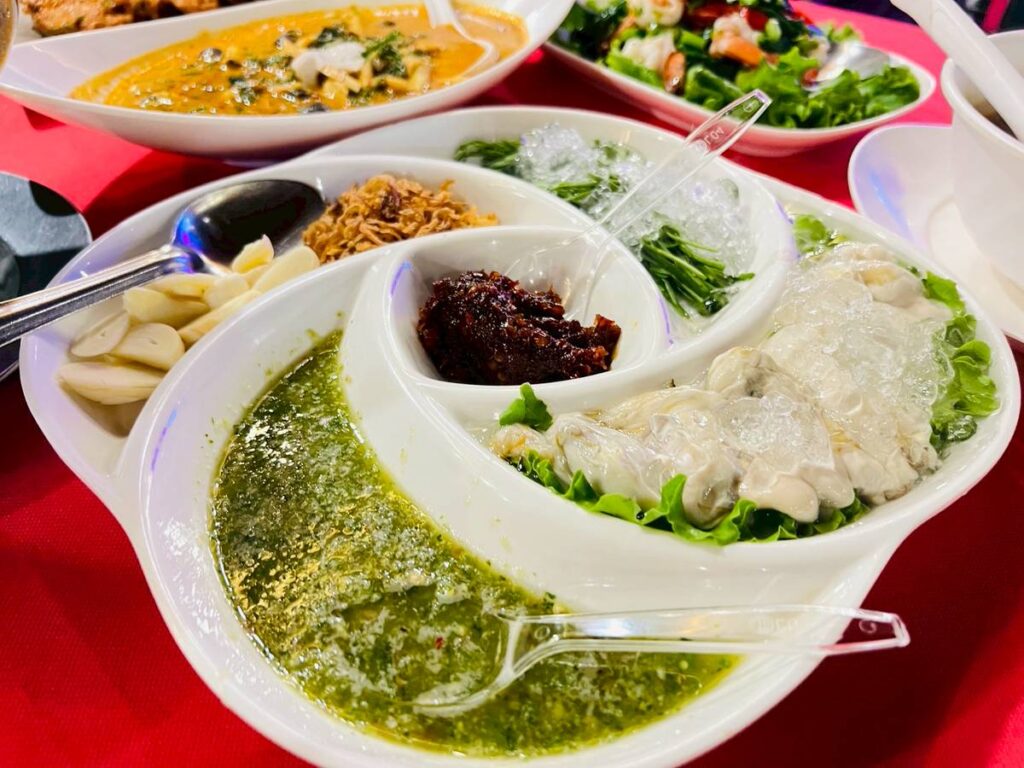
First up, we’ve a distinctive dish that awaits those brave enough to step beyond the ordinary: Oysters with condiments. While raw oysters are a global delicacy, the Thai approach transforms them into a complex and unforgettable gastronomic experience.
Known locally as Hoy Nang Rom Song Kreung, this dish is a simple mix of flavours and textures. Fresh small oysters are served with their accompanying condiments, or ‘kreung,’ that make it so remarkable. Each one is a small parcel of intense flavour, arranged around the oysters.
The ensemble typically includes a fiery chilli paste or a slice of fresh bird’s eye chilli, ice-chilled kale, and a fragrant sprig of fried garlic for a nutty crunch. The finishing touch is often a few leaves of water mimosa or basil, adding a clean, herbal note that cuts through the richness of the oyster. The entire combo is then drizzled with a rich and tangy seafood sauce made from fish sauce, lime juice, and sugar.
To eat it, you don’t simply slurp the oyster. Instead, you carefully stack a bit of each condiment onto the oyster before bringing it to your mouth. The result is a taste explosion: the smooth, briny taste of the oyster is immediately followed by a kick of sour, salty, sweet, and spicy. It’s a quintessential Thai eating experience, showcasing the country’s love for a multitude of tastes in a single, harmonious bite.
Yum Kana Goong Sook
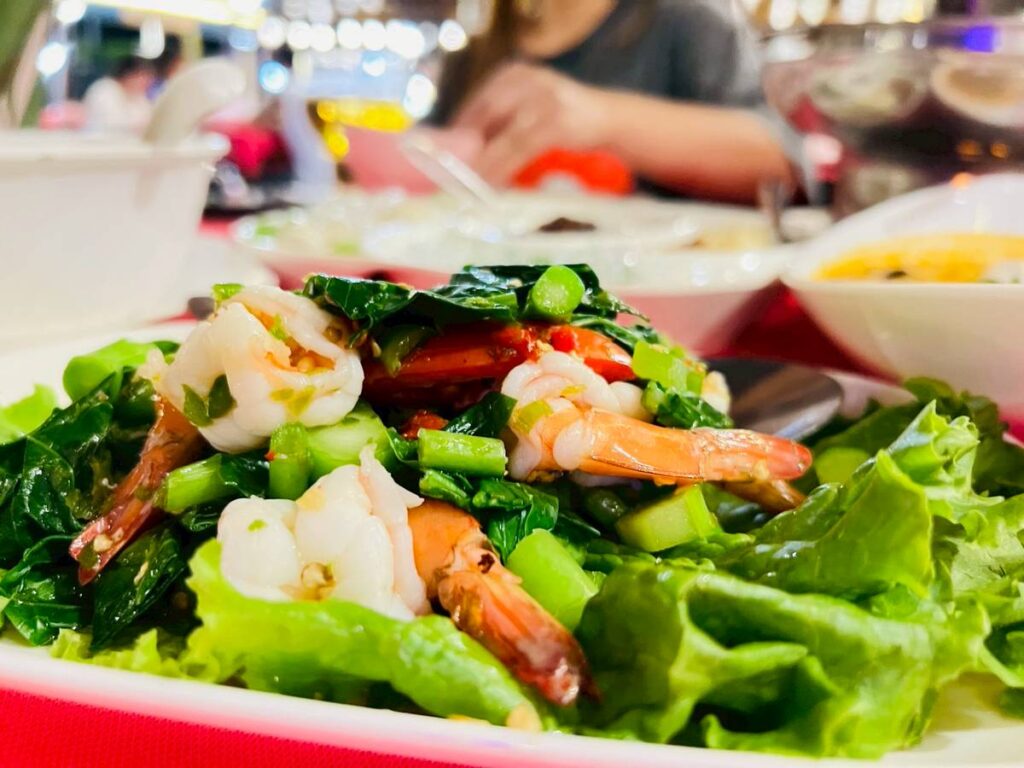
Whilst in English it’s translated as Kale and Cooked Prawn Salad, this isn’t your average green salad. It’s a culinary paradox, marrying a rich dressing with crisp, healthy vegetables. The star of the show is the kale, or kana. Unlike its European cousin, this variety has a thicker, more succulent stem, which is first blanched until it is tender-crisp. This careful prep gives the kale a delightful crunch.
The salad is tossed with juicy cooked prawns, but the real magic lies in the dressing. It’s a blend of flavours: the heat of chilli, the tang of fresh lime juice, the savouriness of fish sauce, and a touch of palm sugar for sweetness.
Finally, the dish is finished with a flourish of crunchy garnishes. A handful of peanuts adds a nutty richness and a satisfying crunch, while thinly sliced shallots and a sprinkle of fresh coriander provide an aromatic lift.
The result is a light but thoroughly satisfying salad that’s simultaneously spicy, sour, sweet, and salty. It’s a dish that proves that a salad can be a thrilling and complex culinary adventure at the same time.
Pla Tord Kratiem
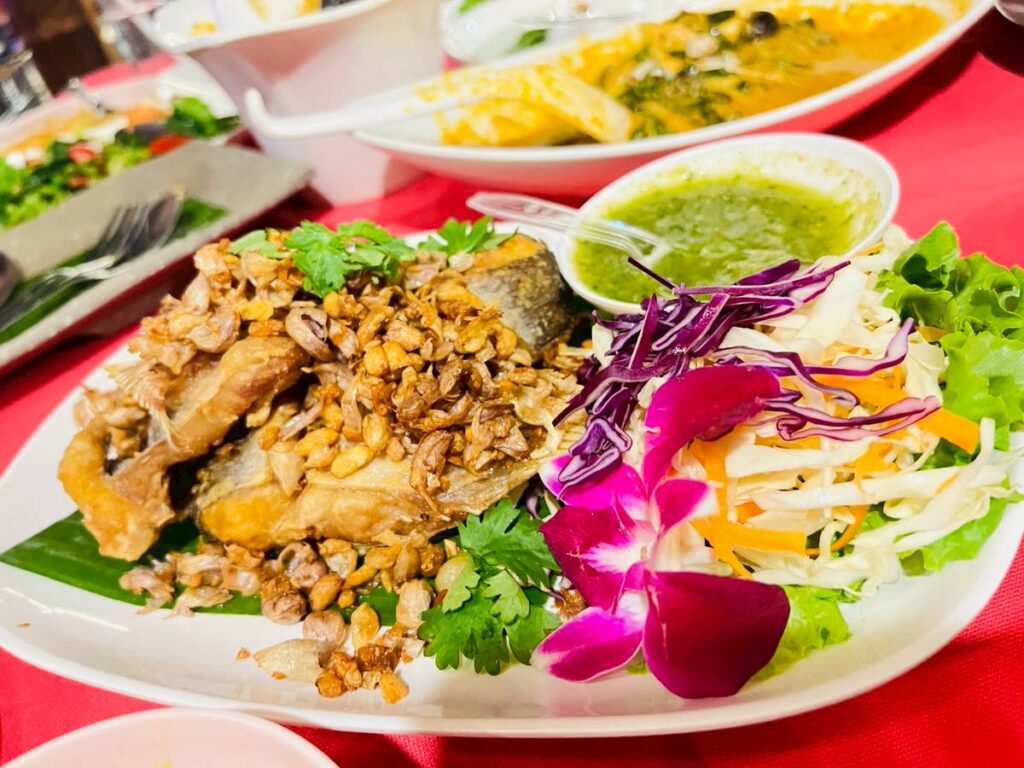
In the diverse world of Thai cuisine, some dishes stand out for their elegant simplicity. One such dish is Pla Tod Kratiem, or Deep-fried Fish with Garlic. It shows us how the country can take a few core ingredients and turn them into a culinary masterpiece.
The star of this dish is a whole fish, often a snapper or a sea bass, which is meticulously prepared and deep-fried until the skin is crisp and the flesh remains moist and tender. This creates a beautiful contrast of textures, with a crunchy exterior giving way to a flaky, succulent inside.
The true magic, however, lies in the garlic. Rather than being a mere afterthought, it becomes a central component of the dish. Finely chopped or thinly sliced garlic is fried in the same oil until it becomes a rich, golden brown. This process transforms its pungent character into a nutty, sweet, and aromatic flavour that is comforting and deeply addictive. This crisp garlic is then generously piled over the deep-fried fish, creating a visually stunning and fragrant crown.
The dish is typically served with a simple but potent dipping sauce that provides a zesty and spicy counterpoint to the rich, savoury flavours of the fish and garlic.
Deep-fried Fish with Garlic celebrates the perfect marriage of texture and flavour, where the crispy skin, tender flesh, and fragrant garlic come together. It’s a true Thai classic, popular in both bustling local eateries and high-end restaurants for good reason.
Tod Man Pla
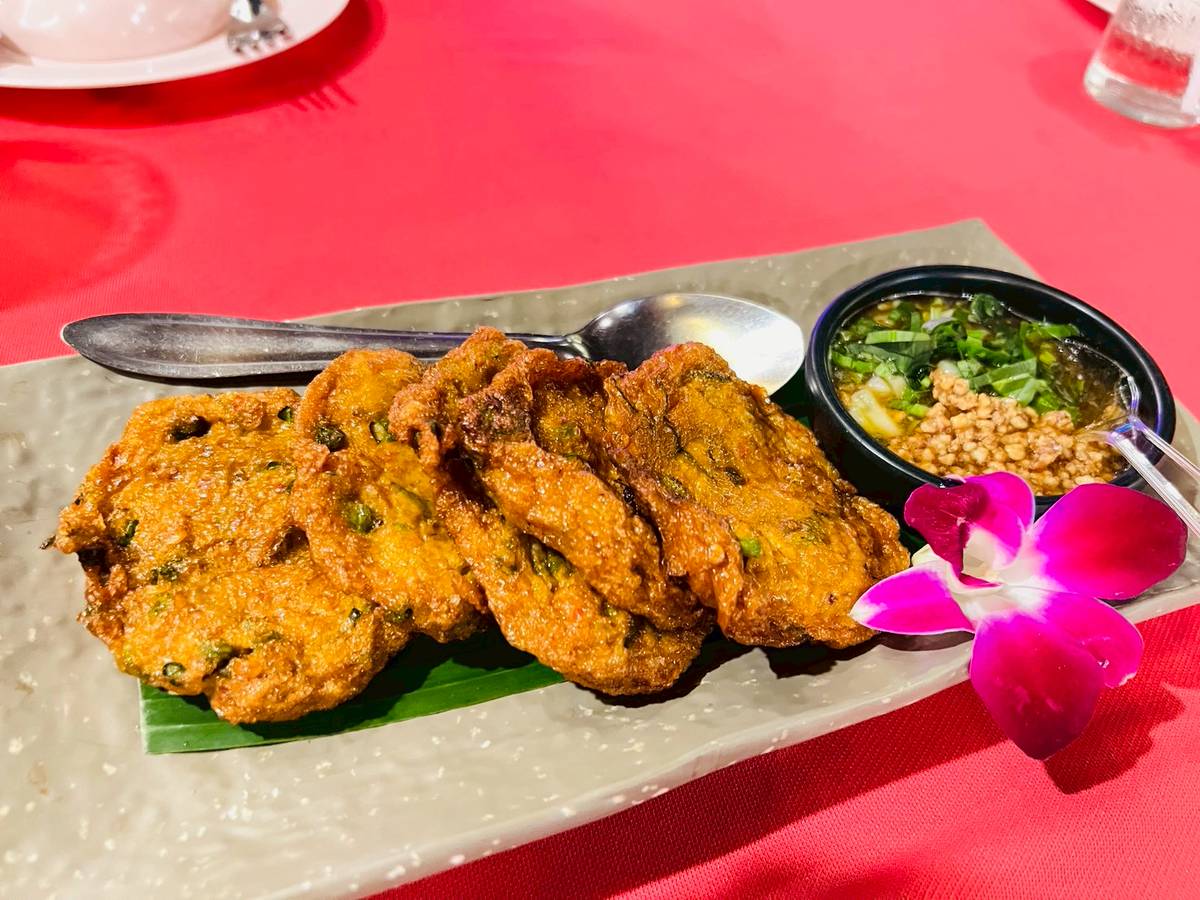
Known as Tod Man Pla, these Thai fish cakes are a beloved snack and a showcase of the country’s culinary artistry, taking humble ingredients and turning them into a mouthful of complex flavours.
Unlike Western-style fish cakes, the Thai version has a distinctively bouncy and springy texture, which is the result of a precise and laborious process. The fish, typically a white fish like a barracuda or a catfish, is finely minced and pounded with a mortar and pestle. This intensive process, a kind of kneading, builds the gluten-like protein structure that gives the finished product its signature chew.
The fish is then blended with a fiery red curry paste, which infuses the mixture with a deep, spicy heat. This is then balanced with fragrant herbs and spices. Thinly sliced long beans add a refreshing crunch, while a touch of kaffir lime leaves provides a bright, citrusy taste that cuts through the richness.
The patties are then deep-fried until beautifully golden brown, with a crisp outer crust and a wonderfully soft interior. They are traditionally served with a sweet and sour dipping sauce providing a delicate balance of sweetness from sugar, tang from vinegar, and a subtle saltiness from fish sauce. The sauce is often studded with crushed peanuts and fresh slices of cucumber, adding a cooling freshness and a nutty crunch.
Kaeng Pa
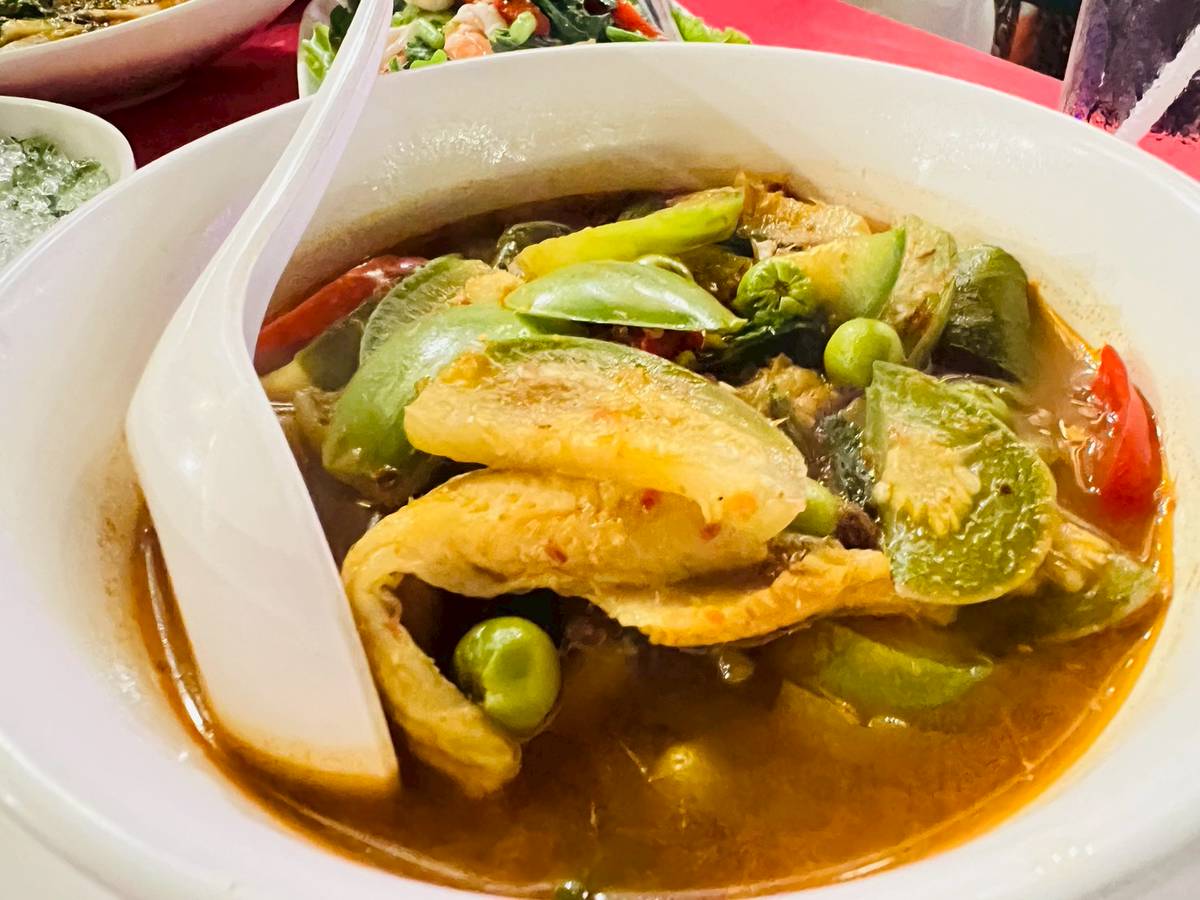
Probably one of my two favourite dishes when it comes to Thai food. Jungle Curry is a broth that transports the diner straight to the heart of the wild. Originating from the dense forests of Central Thailand, this curry is a departure from its more famous, creamy cousins. It’s a water-based curry entirely free of coconut milk. This absence makes it clear and intensely flavourful, allowing the pure, unadulterated heat to shine through.
The name “Jungle Curry” refers to ingredients that are traditionally foraged from the surrounding environment. The curry paste itself is a formidable blend of flavours, including a generous amount of green chillies, garlic, lemongrass, and galangal. In addition, there are exotic jungle herbs like fingerroot, a type of ginger, and green peppercorns that give it its distinctive aroma.
Into this scorching broth goes a medley of rustic vegetables. Strips of lean meat, often venison or wild boar, are common, alongside crunchy eggplant, bamboo shoots, and sweet basil. The result is a sensory onslaught—an incredibly spicy broth.
Jungle Curry isn’t for the faint of heart – a raw and rustic dish that’s as wild as the jungle from which it takes its name. It is a true adventure into the undiluted soul of Central Thai flavour.
Kaeng Khua Hoi Khom Het Thob
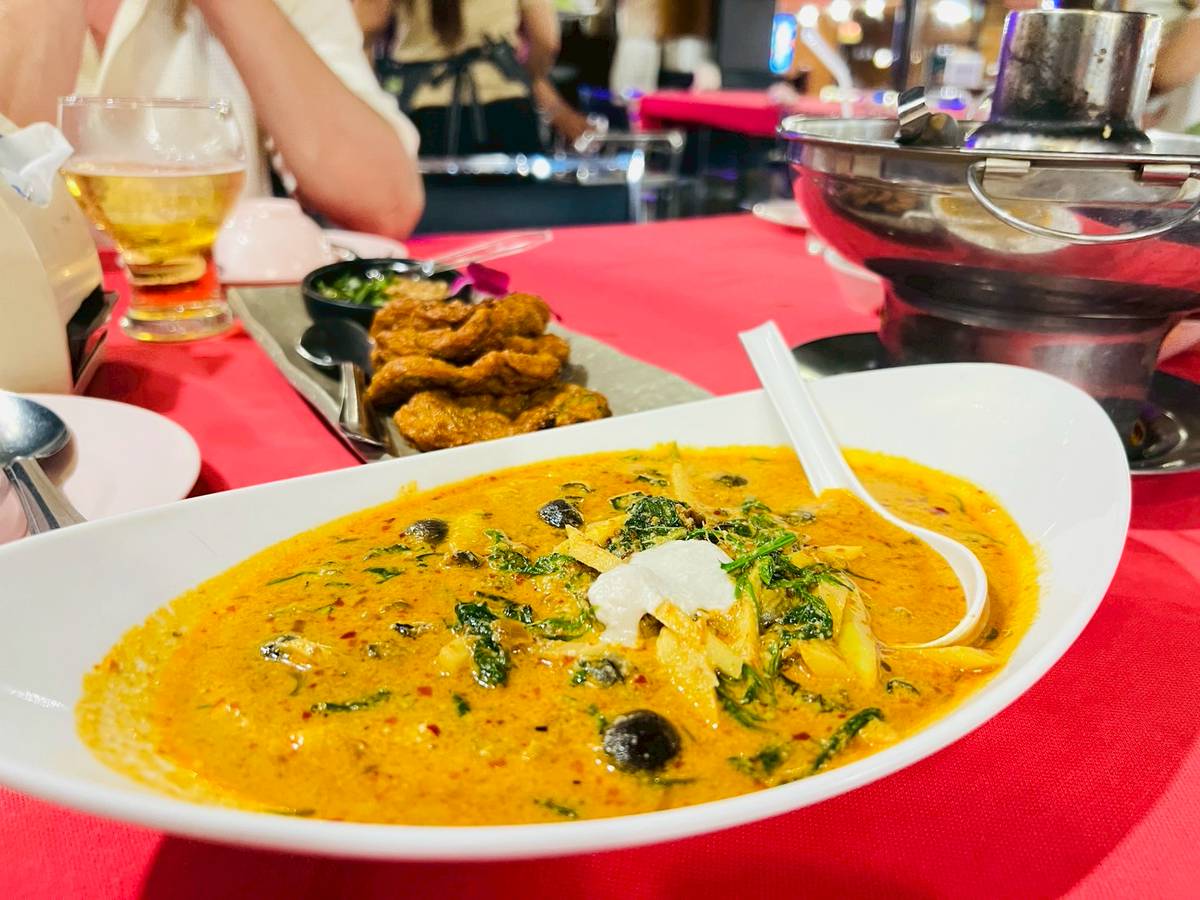
This dish – curry bitter snails and puffball mushrooms is a celebration of the wild and the foraged. The name “bitter snails” refers to the local pond snails, a delicacy prepared by stir-frying in a dry curry to remove any bitterness. Then there is the puffball mushroom. These are a special, seasonal ingredient, appearing only for a brief period at the start of the rainy season. They’re famed for their firm, almost crunchy texture and their ability to soak up the intense flavours of the curry.
The “kaeng khua” style of curry is not a soupy dish, but rather a stir-fried paste that coats every ingredient. The curry base is a blend of red chillies, lemongrass, and galangal, all pounded together with fermented fish to give it a deep punch.
Hor Mok
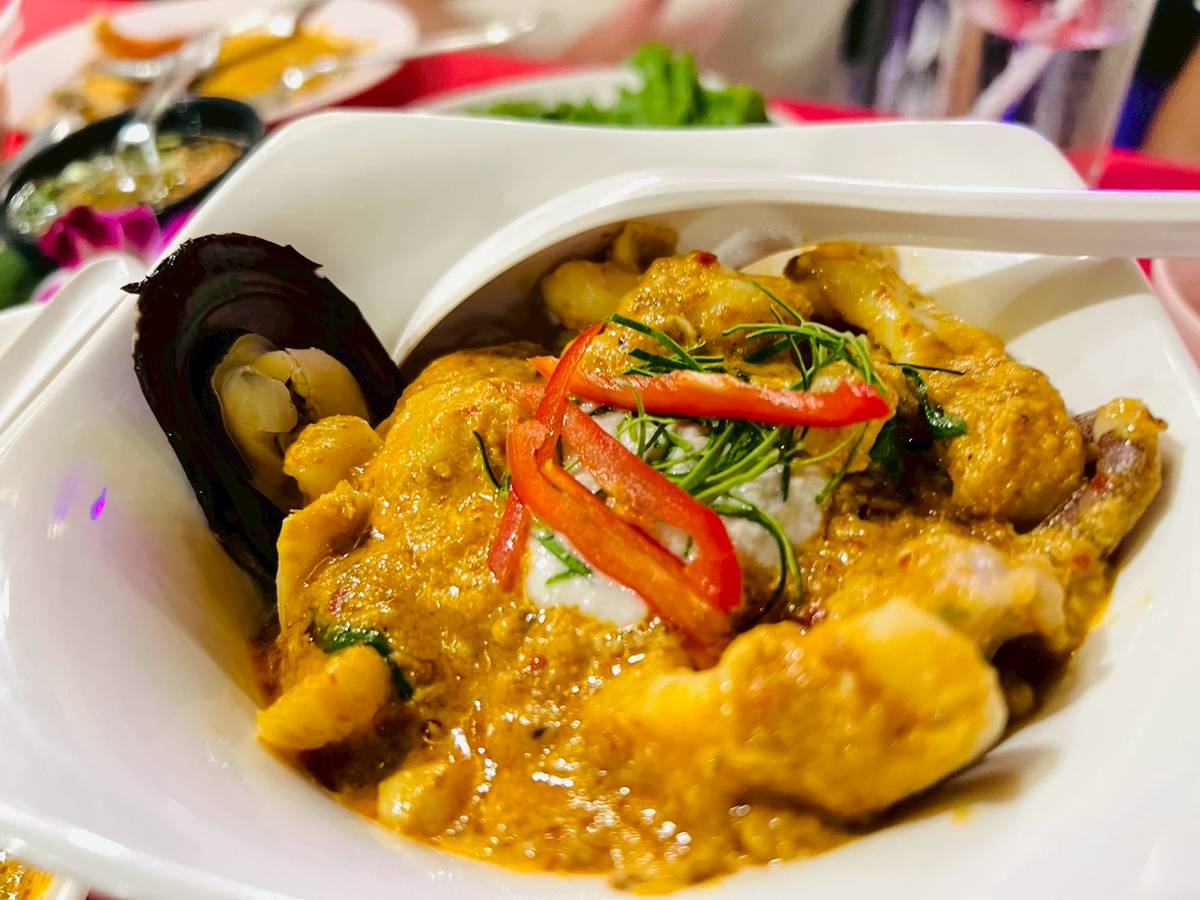
This dish is very much defined by its texture. Ho Mok is a delicate steamed custard made from a smooth mousse of fish, blended with a potent red curry paste and rich coconut cream. The mixture is then folded with sliced kaffir lime leaves and pieces of sweet basil.
In the local markets, you’ll see it traditionally inside a small, handmade cup fashioned from a banana leaf. The process transforms the raw mousse into a silky custard that holds its shape. The dish is typically finished with a drizzle of thick coconut cream and a garnish of chillies, adding to the visual appeal.
The result is a dish that is at once spicy and sweet, with a wonderful flavour that lingers on the taste buds. The concept is familiar throughout Southeast Asia. There are striking similarities to the Baba Nyonya version – Otak Otak, highlighting to us the culinary lineage across the entirety of the wider region.
While the core concept is the same, there are subtle differences in character from the Nyonya version. Otak-Otak has a firmer texture and a smoky flavour, while Ho Mok has a softer, more custard-like consistency. The spices also vary, with the Thai version leaning on galangal and kaffir lime, while the Baba Nyonya versions use turmeric and lemongrass.
How to Eat Great Food the Central Thai Way
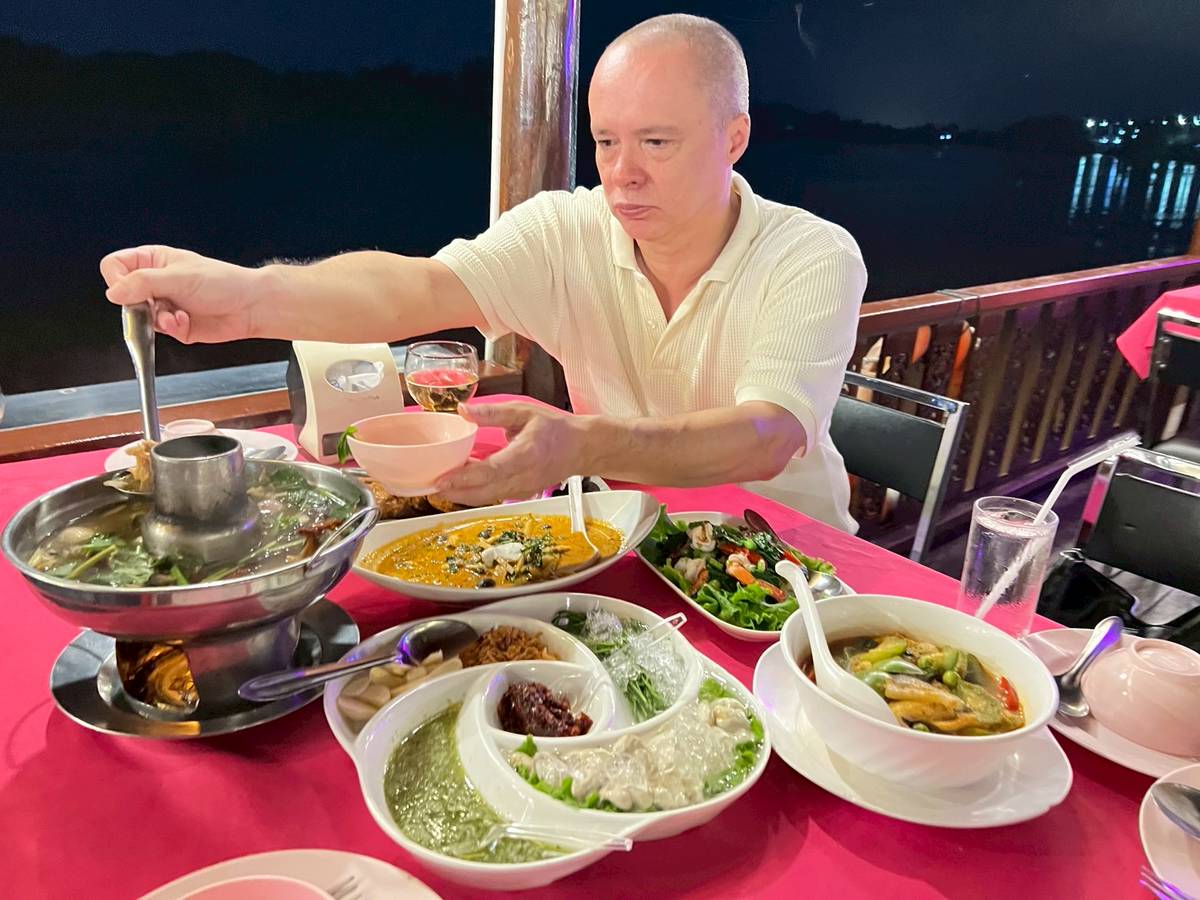
The most important rule is that a meal isn’t a single dish. A typical Central Thai table will be laden with a variety of plates—a rich curry, a spicy salad, a clear soup, and a stir-fried dish. This isn’t arbitrary; it’s the culinary philosophy of balance in action. Diners are encouraged to take a spoonful of rice, followed by a small portion from each dish. This ensures a constant interplay of flavours within the course of the meal, with each spoonful contributing a different taste.
In Central Thai cuisine, chopsticks are exclusively for noodle dishes. For rice-based meals, the preferred utensils are a fork and a spoon. The fork is used solely to push food onto the spoon, which is the primary eating instrument. This elegant yet practical method allows for the perfect spoonful of food, ensuring a balanced mix of rice and accompanying curry or meat.
Eating Alone is not Tasty
Dining in Central Thailand is as much about ritual as it is about food. Unlike the often solitary experience of eating in the West, here, a meal is a profoundly communal event. So much is this a part of Thai culture that there’s even a phrase: กินคนเดียวไม่อร่อย (Kin khon diao mai a-roi)
On the surface, the meaning is straightforward: “eating alone is not tasty.” But this is far more than a literal observation about flavour. It’s a powerful and widely understood proverb that speaks to the heart of Thai social life.
The phrase encapsulates the belief that the joy of a meal is found not just in the food but in the act of sharing it. A dish, no matter how nice, is considered incomplete without the presence of friends, family, or colleagues. The conversation and laughter at the table are considered essential ingredients of the dining experience.
This saying is used to encourage togetherness. It’s a reflection of the communal spirit that underpins Thai society. In a culture that values interdependence, “eating alone” becomes a metaphor for a life lived without sharing and companionship. It suggests that happiness, much like a good meal, is best savoured in the company of others.
The Global Thai Phenomenon
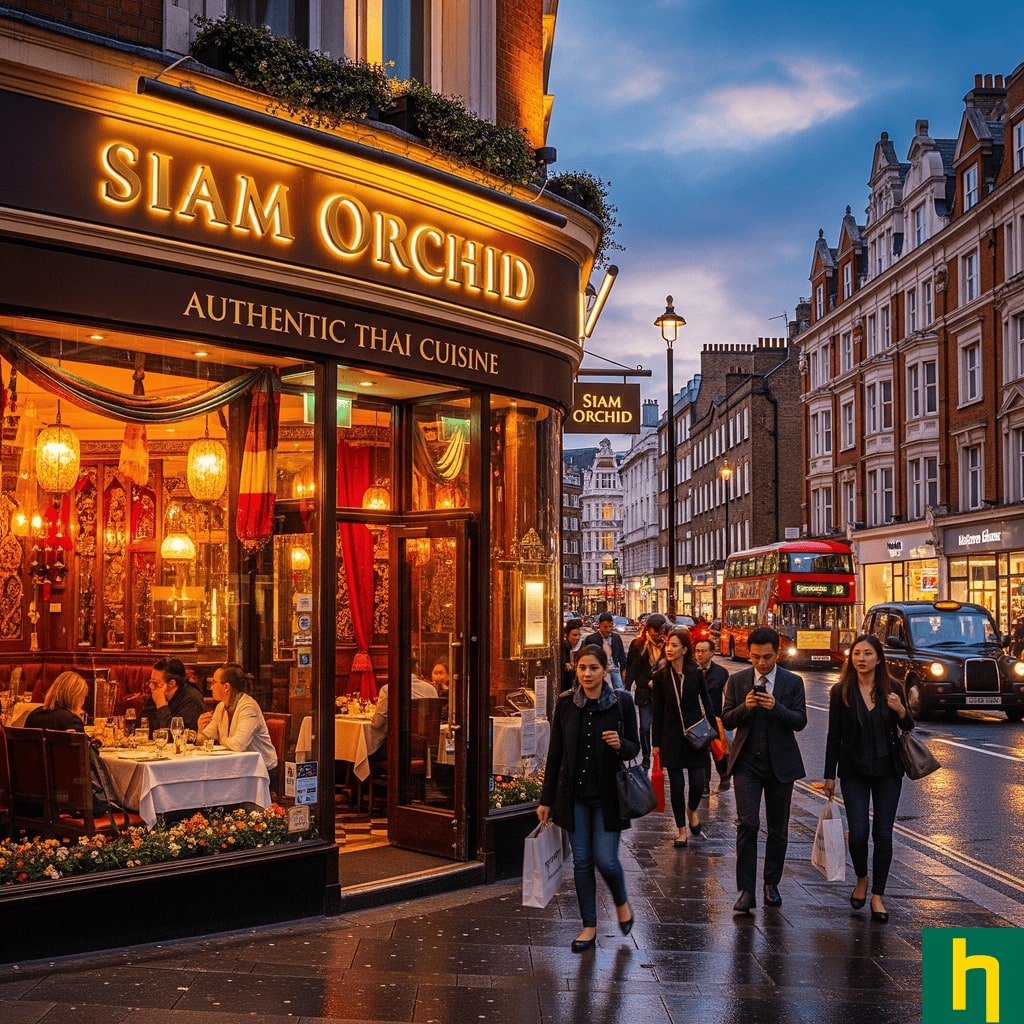
The widespread global popularity of Central Thai cuisine isn’t organic; it’s a meticulously engineered success story. Starting in the early 2000s, the Thai government launched the “Global Thai” initiative, a form of “gastrodiplomacy”. The goal was to use food as a form of cultural soft power. The program provided a framework for expanding the presence of the Thai restaurant worldwide. This included training for chefs, financial assistance, and a “Thai Select” certification to ensure a level of authentic Thai cuisine.
Only certain dishes were added. Those dishes where the freshest ingredients were available overseas. This approach enabled the Thai government to brand the cuisine. The initiative transformed the Thai dish from a niche, exotic food into a mainstream takeout staple in many parts of the world.
A key element of Thai cuisine’s global success is its ability to adapt to foreign tastes. This involves adjusting spice levels and substituting hard-to-find ingredients to appeal to a wider audience. For example, milder curries such as Massaman and Yellow Curry are often popular starters for Western palates, while the spicier Green and Red curries may be toned down. This deliberate flexibility allows Thai food to thrive globally while still maintaining its core flavours.
Thai Cuisine – From Street Food to Global Phenomenon
Central Thai cuisine is a dynamic tradition that harmonises flavours, ancient techniques, and cultural adaptations. Its global presence comes from a deliberate effort, combining centuries of foreign influences with modern, government-led initiatives to engineer a global brand
Perfect balance and communal spirit in the Thai dining experience are a reflection of a society that values harmony. It’s a reminder that food, at its best, is a form of cultural memory—a way for a people to preserve their history and identity. The next time you savour a spoonful of Tom Yum or a bite of a spicy stir-fry, consider the journey of those ingredients, the hands that prepared them, and the generations that have perfected them. It’s a taste of heritage, waiting to be rediscovered with every meal.
Central Thai Cuisine FAQs
What are the origins of Central Thai cuisine?
Central Thai cuisine’s origins can be traced to societies that settled along the Chao Phraya River and the royal courts of the great Thai Kingdoms, such as Ayutthaya and Bangkok. The food was highly refined and elaborate, particularly within the royal court, and was influenced by centuries of trade and migration.
What are the key flavour profiles and ingredients?
Central Thai cuisine is known for its balance of sweet, salty, sour, and spicy flavours. Essential ingredients include aromatic herbs like lemongrass, galangal, and kaffir lime leaves, along with staples such as fish sauce, coconut milk, and tamarind paste.
How has Central Thai cuisine been influenced by other cultures?
Central Thai cuisine has been shaped by various cultural influences. The Chinese introduced stir-frying and noodles, while Indian and Persian traders brought spices. Portuguese missionaries were responsible for introducing the chilli pepper, which is now a fundamental part of the cuisine.
What is the dining culture like in Central Thailand?
Dining in Central Thailand is a communal experience. The article highlights the proverb “eating alone is not tasty,” which emphasises the importance of sharing a meal with others. Dishes are typically served at the same time and shared among everyone at the table.
What is the dining culture like in Central Thailand?
Dining in Central Thailand is a communal experience. The article highlights the proverb “eating alone is not tasty,” which emphasises the importance of sharing a meal with others. Dishes are typically served at the same time and shared among everyone at the table.

